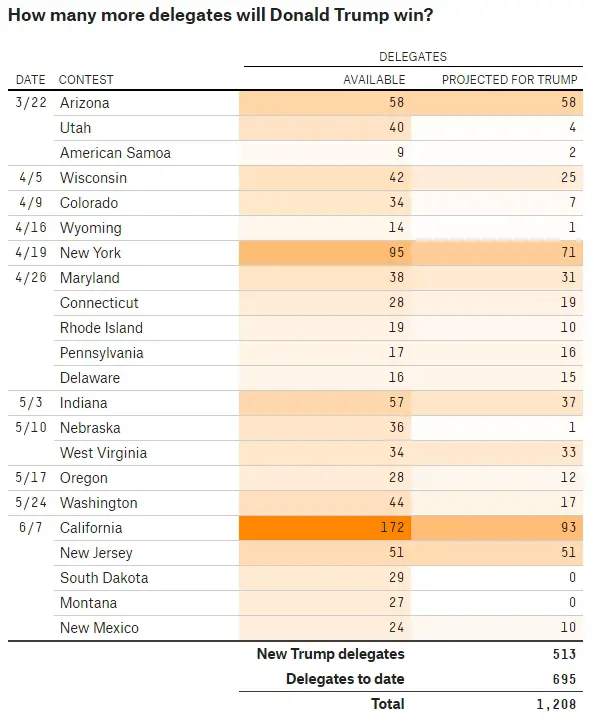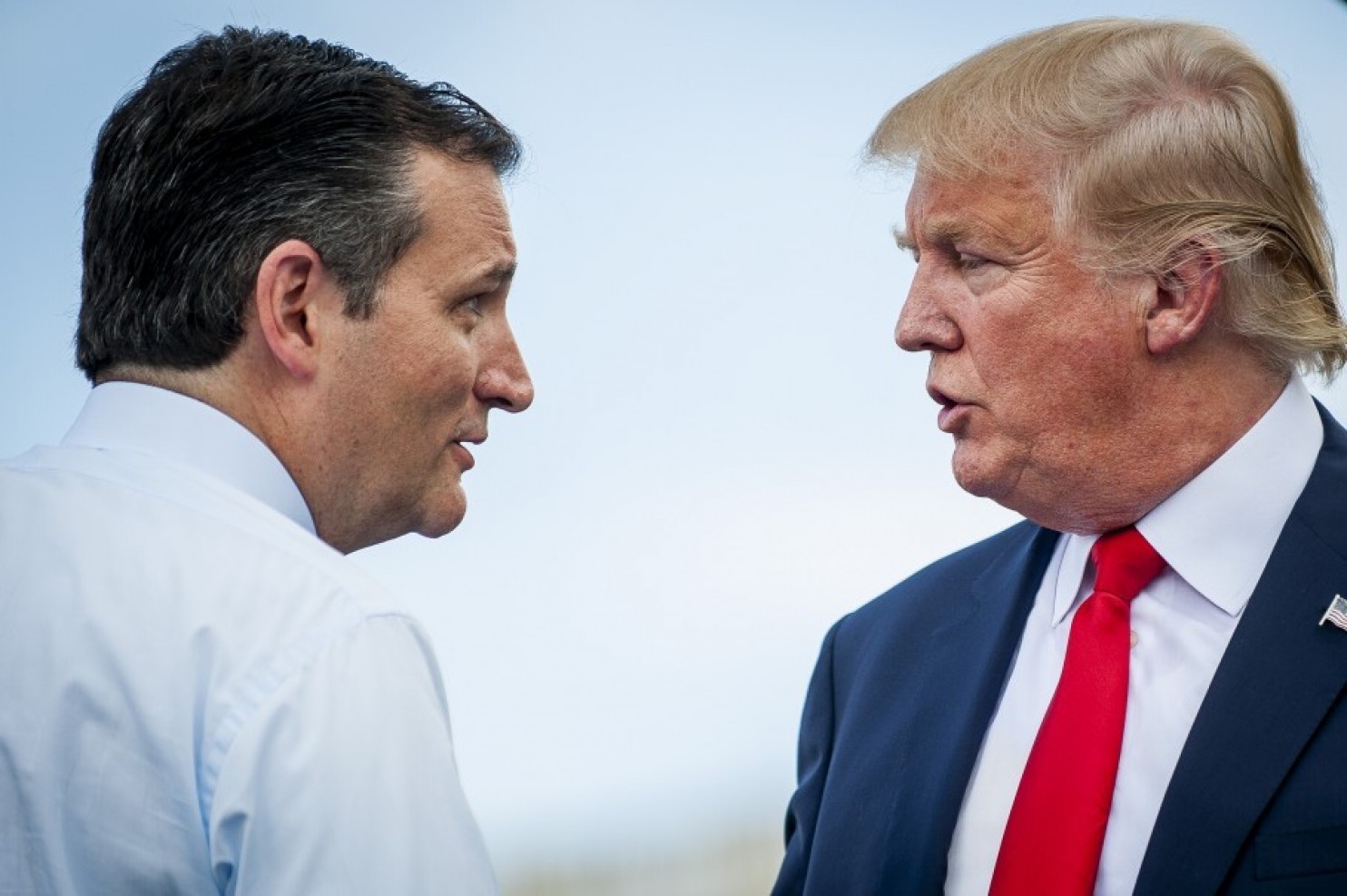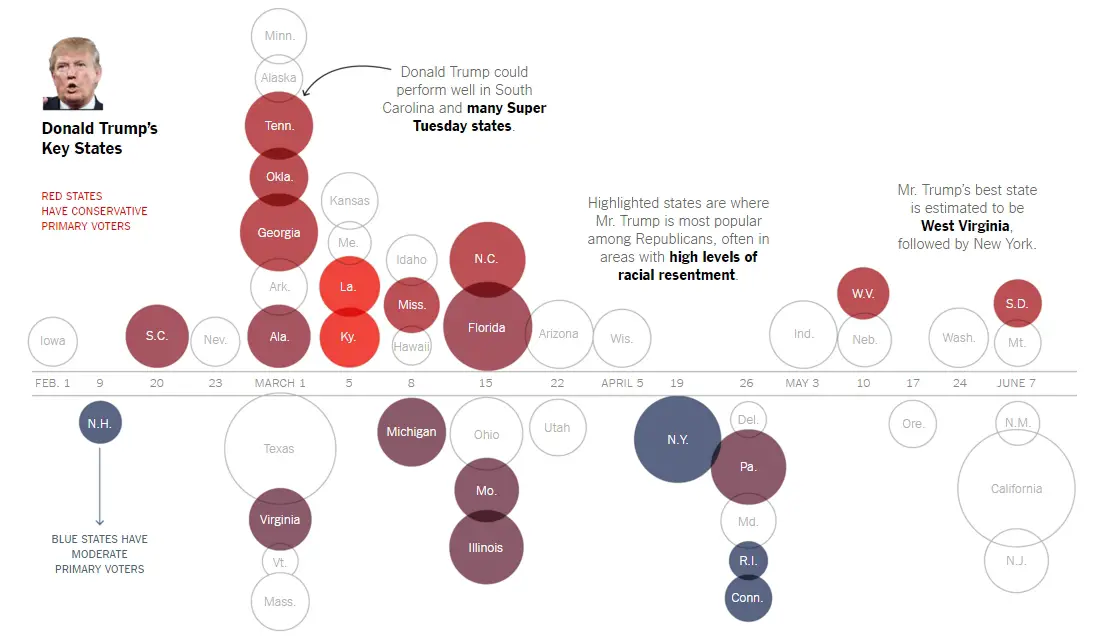All this year, the big political story has been Donald Trump—what he says, what he does, what he plans. But now that we’re deep into the campaign, we’re beginning to ask, could he really win? And if so, how? And how will we judge his progress along the way to 1,237 delegates?
The first question was, which primary states could he win, based on his issues and appeal? The New York Times provided a graphic:
As you can see, Trump has over-performed expectations. Yes, he lost Oklahoma, which he was expected to win. However, he was not expected to win Nevada, Arkansas, Massachusetts, Vermont, or Hawaii.
Of course, with proportionality, “winning” a state doesn’t matter. In fact, it’s possible to “win” a state, but end up with fewer delegates than the “loser.” But now that we’re into the “winner-take-all” states, “winning” really does mean winning. And increasingly, it is the number of delegates we’re watching, not just “states won.”
Now, FiveThirtyEight has given us the NUMBERS to look for, not just which states:
Trump has 695 delegates now, and, on average, our respondents estimate he will still be just a little bit short of 1,237 on June 7, when California wraps up the primary calendar. He might be close enough, though, that he could clinch the nomination in the six weeks between California and Cleveland. . .
Overall, our average response suggests that Trump will win 513 delegates the rest of the way. When combined with the 695 he’s won so far, that means he’d fall 29 delegates short of the 1,237 needed to win on the first ballot. Here is the Olympic average for each upcoming contest (we’ve left out some contests with only unbound delegates; see the footnotes for more detail):

For explanation of where these delegate numbers originate and the methodology in use, see the story from FiveThirtyEight
All of the respondents agree that Trump is not likely to get close to 1,237 delegates before June 7, when California and four other states vote. The closest Trump came was 1,088 delegates. And even the most optimistic Trump projection has him hitting 1,244 after all the states have voted. That leaves Trump with very little room for error to reach a majority of delegates without at least some of the currently unpledged or uncommitted delegates coming to his aid.
The article gives much more detail. If you are a detail-oriented person, check it out.
OK, so we’ve established that winning proportional states doesn’t necessarily make one a “winner.” And, we have a pretty clear path for Trump to follow. The Times graphic expected Trump to LOSE all three of the next states, Arizona, Utah, and Wisconsin—BUT the polls say Arizona is Trump Territory, up by 13%, and the most recent Wisconsin poll puts Trump up by 12%. He was never expected to do well in Utah. In fact, the betting odds are that Cruz will win, with a probability of 94%. No surprise there.
We will follow these paths and give you an update on whether Trump is on-target to win, and how far ahead or behind he is. If he does as well as expected, he should be able to cajole enough delegates to get the nomination.
Donate Now to Support Election Central
- Help defend independent journalism
- Directly support this website and our efforts

